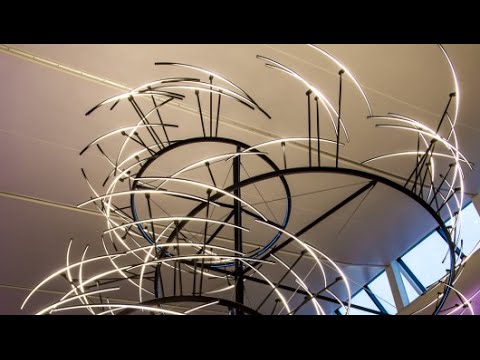A few months from now, I'll be running a summer project with 9th and 10th grade high school students to create a large scale LED installation project at our school- I've started learning about the Arduino platform and using it to drive LEDs, and I'm posting here seeking guidance, thoughts, and advice about the challenges this project will need to watch out for that I won't foresee because of my inexperience.
I'm very early in the learning process and I hope that over the next two months I can develop a basic grasp of what I'll need to know. I'm hoping that people here can help me to locate the right resources to be learning from.
- Our Project
Our high school doesn't have a bell system, and we want the students to have this opportunity to design and create it for themselves and learn a lot along the way. Over summer, a group of students will be learning about designing LED circuits, LED strips, programming patterns, and installing them around the school
- What it will look like
The students will have a lot of ownership, but at the end of the project we want to have LED strips running around the top of classrooms and down corridors. These LED strips will fade into different colors based on the time of day: at 8am, when school starts, the LED's might fade up with yellow like the sunrise. At 8:40, when the students go to their second class, the LED's would transition to Orange. This change will be easily visible in all ten of our classrooms and on both sides of our two corridors.
- The challenges I can see
I don't know how to design this project, and I'm starting with the basics- but some things that I don't even know where to begin how to learn about:
-
What are the basic principles for designing the circuit and power requirements to keep the system robust? i.e, we'll need to make sure that one problem doesn't crash the whole system
-
How can we create the system so that it changes on a time schedule? How can we design it to make it easy to change the schedule?
-
How many LED strips can be connected together? Is this project best concieved as a continous system of 100+ meters, or do we create many smaller units? Each with their own microcontroller?
-
Assuming that many microcontrollers are required, how do we network them together to allow central control? How do we design to minimize costs?
- My next steps
I'm trying to find experienced people who can consult with me to help support my students to make this project a reality. As you can see, I am only just beginning- and so the main challenge I face is that I lack the technical understanding to even begin to learn how to build something like this. I'm starting with the basics- learning how to program one strip, how it interacts with the arduino, following along with instructibles.
- The questions:
-
What resources would help me to learn how to approach this project?
-
What are the problems with the idea? What are the challenges we'll need to solve that I can't see?
With good faith and tenderness,
This is a high school teacher (in over his head)
